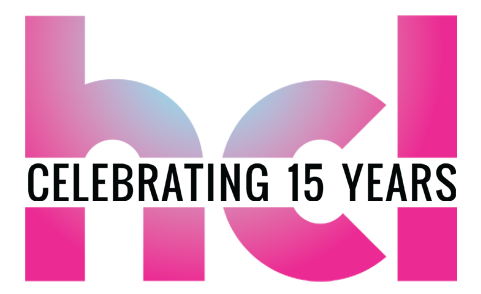Artists in Residence
The AIR program is HCL’s flagship residency that supports artists to create time-based work. Artists receive stipends and no-cost studio space, along with tailored access to HCL’s full producing, development, and communications resources, and more.
This residency is designed to meet artists where they are in their creative process: in research, development, workshop production, public presentation, post-premiere. HCL supports artists advancing their work with multiple or singular areas of focus, ranging from choreography to music composition, from community-activated social practice to filming, from writing and rehearsal to meetings and teaching—as part of the process or as the project itself.
Artists are invited to apply annually, and may be joined by Residents curated by HCL’s Artistic Director. HCL additionally opens portions of this residency to artists in participating partner programs who may benefit from HCL’s support. Such partners include Chicago Dancemakers Forum and 3Arts.
KT Shivak
HCL will support KT in the development of The One Horn, a piece featuring a lifesize rhinoceros puppet based on a real animal from history that sparked an obsession both to possess it and to consume its image. The piece is inspired by the paradox of a rhino in Renaissance Europe, stolen from its habitat and transplanted on a sailing ship, to a palace, a combat arena, and eventually sent to its final destination: Vatican City.
Haruhi Kobayashi
For her 2025 fellowship project, Haruhi Kobayashi will develop a live reimagining of her forthcoming debut solo album, Through Monolid Eyes (pending title), as a theatrical concert experience.
Through collaboration with movers and dancers to enhance stage presence, lighting designers to transform the atmosphere of each scene, and other musicians—such as vocalists and drummers— the album's energy will be brought to life.
Christopher Knowlton
In Christopher’s Fellowship year with HCL, he will focus on the continuation of Deus Ex Machina Doctrina, a solo interactive performance installation exploring the deification of new technologies, the implications of artificial intelligence (AI) for dance, and the extractive forces underpinning generative AI.
Carissa Lee
HCL will be supporting Carissa Lee with the ongoing development of Thrival. This performance-based work is rooted in themes of transformation, resilience, and renewal. The work deconstructs the sounds of survival—laughs, cries, sighs, whoops, screams, long notes, harmonies, and rhythms—and uses them as foundational elements to explore the journey from merely surviving to truly thriving. It weaves in themes of baptism and renewal, asking how we collectively navigate and transcend the challenges that define survival.
Bradford Chin
With support from HCL, Bradford Chin, will be developing Access in Motion: Movement dreams for the future (AIM) is a disability-centered, multimedia communal dance experience facilitated as a looping, interactive movement installation. Centering disability as a uniquely generative lived experience, this communal movement experience approaches accessibility media—including audio description, video projections, and considerations for accessible movement—as artistic tools.






